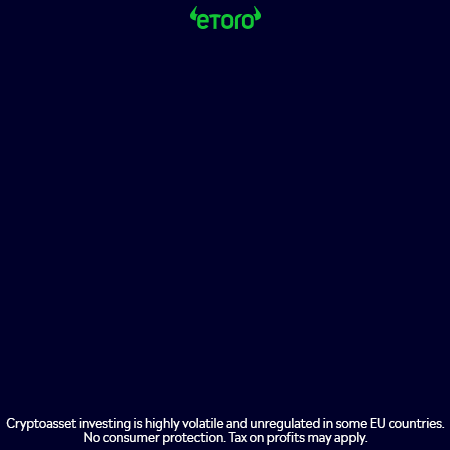A big danger for investors is what are known as ‘value trap’ companies. As the name suggests, these are shares that look cheap, so seem to offer good value. But in fact they end up falling to an even cheaper price and sometimes to zero. Often that is because a company’s business prospects are changing, or its dividend policy has fallen out of step with its ability to generate spare cash.
Here are four red flags I pay attention to when trying to spot value trap companies. If I think a company might be a value trap, I can avoid investing in it.
1. Free cash flow consistently below dividends
As an investor, it is a big mistake to think that company accounts are too boring or complicated to be worth reading. They are a vital source of information.
To pay dividends, a company basically needs to have more hard cash coming in the door than going out. Often investors just look at a company’s ‘earnings‘. Earnings can be a very helpful measure to assess a company’s financial health. But they may be quite different to cash flows. That is because companies sometimes book earnings or costs at a different time than they see any cash impact from them.
Cash flows can swing about a lot even in a stable business. For example, paying for a new factory or office building could mean a big hit to cash flow. So, I focus on what is known as ‘free cash flow’ – basically the excess cash a company generates (or spends) once it has paid for everything such as operating costs and finance costs.
By looking at this over a period of a few years, it is less likely to be affected by short-term swings. It is more likely to reflect the long-term cash generation ability of the company. One key point, though, is that such information is backwards-facing. When assessing a company for my portfolio, I want to judge its future prospects. So I will look at things that could hurt free cash flow, such as a likely fall in sales or large debt repayment that will fall due in the future.
2. Value trap companies and unstable business prospects
Some companies have certain limitations on their future ability to earn money. As the risk of this increases, often the share price will fall so the dividend yield will increase. Looking back, the company may seem to have a solid performance record. But looking forward (which is what an investor needs to do), it might be a very different story.
An example of this is BP Prudhoe Bay Royalty Trust. At first glance, this share may look like it pays out dividends based on the current oil price. With energy prices soaring, that helps explain why the shares have risen 161% this year and 150% over the past 12 months.
But on closer examination, the reality is more complicated than a dividend linked to oil prices alone. In fact, the company’s trust deed contains a couple of vital clauses that could decimate long-term returns. One says that, if the trust goes two years without paying dividends, it will be terminated. Another sets out a formula to help calculate dividends, indeed based on oil prices. But a cost escalator in the formula basically means oil prices need to keep rising sharply over time just to keep dividends level. But sooner or later, oil prices are bound to fall.
A few years ago, many investors were attracted by the company’s attractive yield and strong dividend history. But that should have been a warning sign to research the company more carefully, in which case they would have discovered that the long-term prospects for the dividend were poor. A decade ago, its 7% yield may have looked attractive — but since then dividends have tumbled and the share price has fallen over 90%.
3. Risk profiles beyond my comfort zone or understanding
Shares in miner Evraz are up 87% in little more than a week. That may sound like it could be the opposite of a value trap! But in fact, the Evraz share price has still collapsed 83% in a year. Was it a value trap before, for example, last year? The reality is we do not know. Only in the coming months or years will it become clear whether the recent Evraz share price is a bargain.
One thing that is clear already, though, is that last year many investors were mispricing the risks that might hurt Evraz. Such mispricing of risks is quite common for investors in value trap companies. All companies have risks, but some are more obvious than others.
For example, in early 2017, construction group Carillion yielded a juicy 8%. But as Roland Head wrote back then in “Two 7%+ yielders which could prove toxic to your portfolio“, he felt the firm’s accounting practices added “a considerable amount of risk to the stock“. Within a year, the shares had collapsed to zero – a classic value trap.
4. Financial shenanigans
Free cash flow is a good indicator of a company’s ability to pay a dividend. But the accounts themselves might not always be quite what they seem. Different companies account for things with a variety of approaches.
Many value trap companies have done well previously but fallen on hard times. In such a situation, management may want to convince the market and themselves that the business is in a temporary downturn, not a terminal decline. That can sometimes lead to unusual accounting measures being used.
I look out for any financial shenanigans, whether it is unusually structured loans, dubious accounting practices or consistently paying dividends for years that do not seem to be covered by free cash flow. If a dividend yield looks too good to be true, I then dig into the accounts. If I do not like what I see – or simply struggle to understand it – I will be more concerned that the share could turn out to be a value trap.
The post Value trap companies! 4 red flags to look for appeared first on The Motley Fool UK.
FREE REPORT: Why this £5 stock could be set to surge
Are you on the lookout for UK growth stocks?
If so, get this FREE no-strings report now.
While it’s available: you’ll discover what we think is a top growth stock for the decade ahead.
And the performance of this company really is stunning.
In 2019, it returned £150million to shareholders through buybacks and dividends.
We believe its financial position is about as solid as anything we’ve seen.
Since 2016, annual revenues increased 31%
In March 2020, one of its senior directors LOADED UP on 25,000 shares – a position worth £90,259
Operating cash flow is up 47%. (Even its operating margins are rising every year!)
Quite simply, we believe it’s a fantastic Foolish growth pick.
What’s more, it deserves your attention today.
So please don’t wait another moment.
Get the full details on this £5 stock now – while your report is free.
More reading
I’m prepared for a stock market crash. Here’s why and how
2 of the best penny stocks to buy right now!
Can this medical device giant provide me with passive income?
2 battered FTSE 250 stocks I’m adding to my portfolio today
Oil hits $115, yet the Tullow Oil share price sinks. What gives?
Christopher Ruane has no position in any of the shares mentioned. The Motley Fool UK has no position in any of the shares mentioned. Views expressed on the companies mentioned in this article are those of the writer and therefore may differ from the official recommendations we make in our subscription services such as Share Advisor, Hidden Winners and Pro. Here at The Motley Fool we believe that considering a diverse range of insights makes us better investors.








